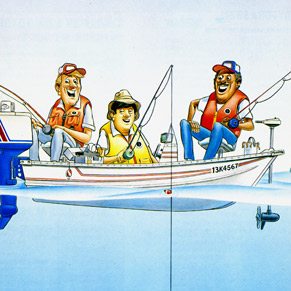As with younger men, swimming is the leading activity involved in fatal incidents among 35 to 49-year-old men, closely followed by boating activities - powerboating, fishing and canoeing.
Key risk factors that emerged among younger men, are accentuated as problem behaviours among mid-life men:
- Only 1% of victims in boating and other relevant situations were wearing a lifejacket or personal flotation device (PFD) properly.
- Half of fatal incidents involved alcoholic beverage consumption - the highest alcohol involvement of any lifestage.
- More than half of victims in this lifestage were alone when their fatal incident occurred.
- Being out in cold water conditions.
- Being out after dark.
:::

Drowning prevention tips
Buy yourself time: wear your lifejacket.
Most drowning victims never intend to get in the water. And trying to put a lifejacket on just before you capsize is like trying to buckle a seat belt just before you have a car crash.
Canadian waters are cold most of the time. Heavy gasping, uncontrollable hyperventilation and cold shock can occur in just the first minute of entering cold water. If the cold shock doesn't kill you, time will.
If you drink, don't drive your boat.
Ironically, the same people who would never drink and drive their car will drink and boat. In Ontario, if you are convicted of driving a boat while under the influence, you will lose your license to operate your boat and your car.
Be prepared. Get trained.
Coast Guard reports most calls for help are predictable and preventable non-distress calls; boats broken down, run aground or out of gas. Have a proper checklist for your boat and follow it before you head out. Make sure that your boat is mechanically sound and that you have enough gas for your intended trip. File a float plan to help Search and Rescue find you in the event of a real emergency.
All operators of recreational powered craft are required to obtain a Pleasure Craft Operator Card. This requires passing a written test demonstrating knowledge of the basics of boating safety including the rules of the road on the water.
Check the ice before you go on it.
Clear, hard, new ice is the only kind of ice recommended for travel. Avoid slushy ice, ice on moving water (rivers, currents), or ice that has thawed and refrozen. Keep away from unfamiliar paths, unknown ice and avoid travelling on ice at night. Remember, ice quality and thickness varies across a body of water and both can change very quickly.
Wear a thermal protection buoyant suit to increase your chance of survival if you go through.
Dog walkers need to be careful. Year after year, owners drown trying to rescue their dogs.